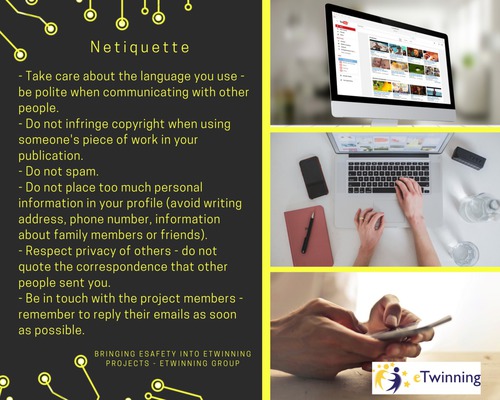The climate change that we face today is a global problem, felt on local scales. We are already commited to some level to it. Mitigation and adaptation are two ways of approaching this problem.
The students collaborating in this project will reflect about their actions and, knowing that there's no other planet, they must act in order to change a few things in their lifestyles.
Aims
- Social skills: collaborative work with students from other schools; improve self-confidence to be able to present the tasks to classmates or partners;
- ICT skills: using digital collaborative Web 2.0 tools;
- Language skills: communicating in English and in their mother language; appreciating the diversity of languages in Europe;
- Identifying individual actions that disturb the environment;
- Presenting possible solutions to the problems identified earlier;
- Establishing relationships between our individual acts and climate change;
- Raising awareness about sustainable development and climate change;
- Developing critical and creative thinking skill;
- Discovering what it means to be an active citizen;
- Implementing some of the eco-friendly solutions pointed by the students.
Work process:
1. Introducing the students, their schools, the cities they live in and their countries of origin.
2. Contest to make and choose the logo for the project.
3. Visualizing and discussing the video “Dear future generations: Sorry”.
4. Reflecting about the question "My actions do not harm the environment, do they?". The students should recognize that each one of us, with our individual actions, contribute to environmental problems. Then they would present their findings to their colleagues.
5. Finding/proposing solutions to mitigate the problems mentioned earlier - these will be given in international teams. Then the students will put the ideas in practice – active citizens.
6. Celebrating April 22nd - Earth Day 2020: Climate Action.
7. Magazine.
8. Project Evaluation.
Chat sessions/online meetings and Forum pages must be active.
Web 2.0 tools: Canva, Emaze, Fotor, Genially, Madmagz, Padlet, Powtoon, Prezi, Tricider,...
Project schedule
Results:
The activities will be registered in the project’s TwinSpace: photographs showing the pupils’ contribution to the project with explanation (paying attention to the EU General Data Protection Regulation).
The families of the students will be informed and will have access to visualize the activities of their children.
Campaign poster and/or videos for raising awareness of the climate change related issues.
A digital magazine – final product, compiling all the activities.
.-.-.-.-.-.-.-.-.-.-.-.-.-.-.-.-.-.-.-.-.-.-.-.-.-.-.-.
Remember some rules of netiquette in an eTwinning project.

.-.-.-.-.-.-.-.-.-.-.-.-.-.-.-.-.-.-.-.-.-.-.-.-.-.-.-.
Copyright
Respecting copyright is an important part of an eTwinning project - remember:
- cite the sources of your research;
- share photos that you took or your own creations;
- use images from https://pixabay.com/.
If you have any doubts asks your teachers!